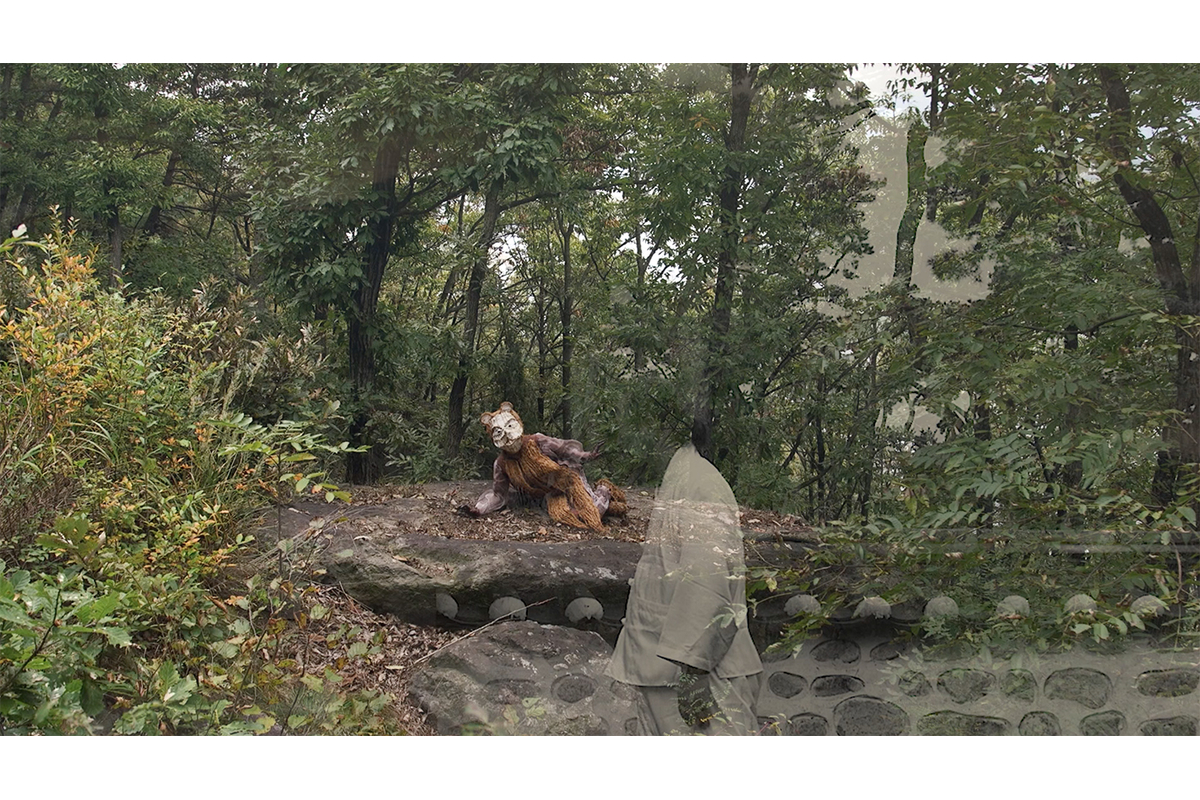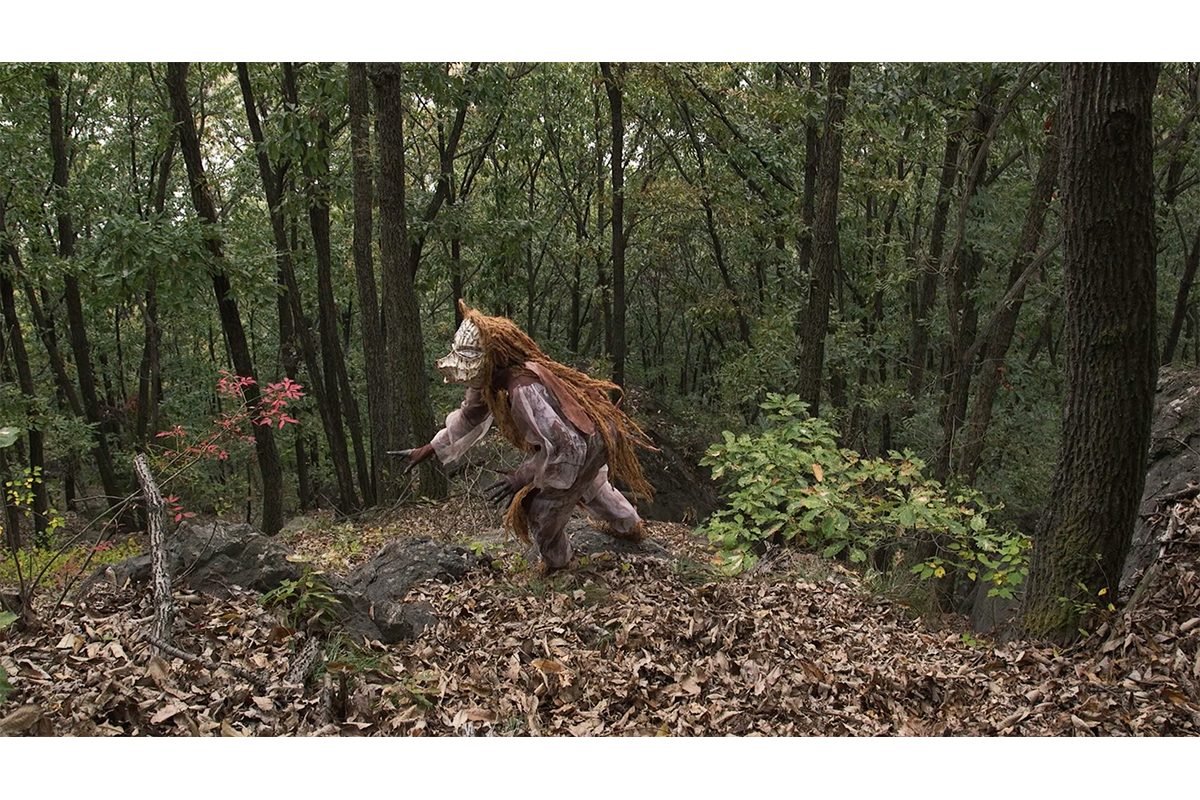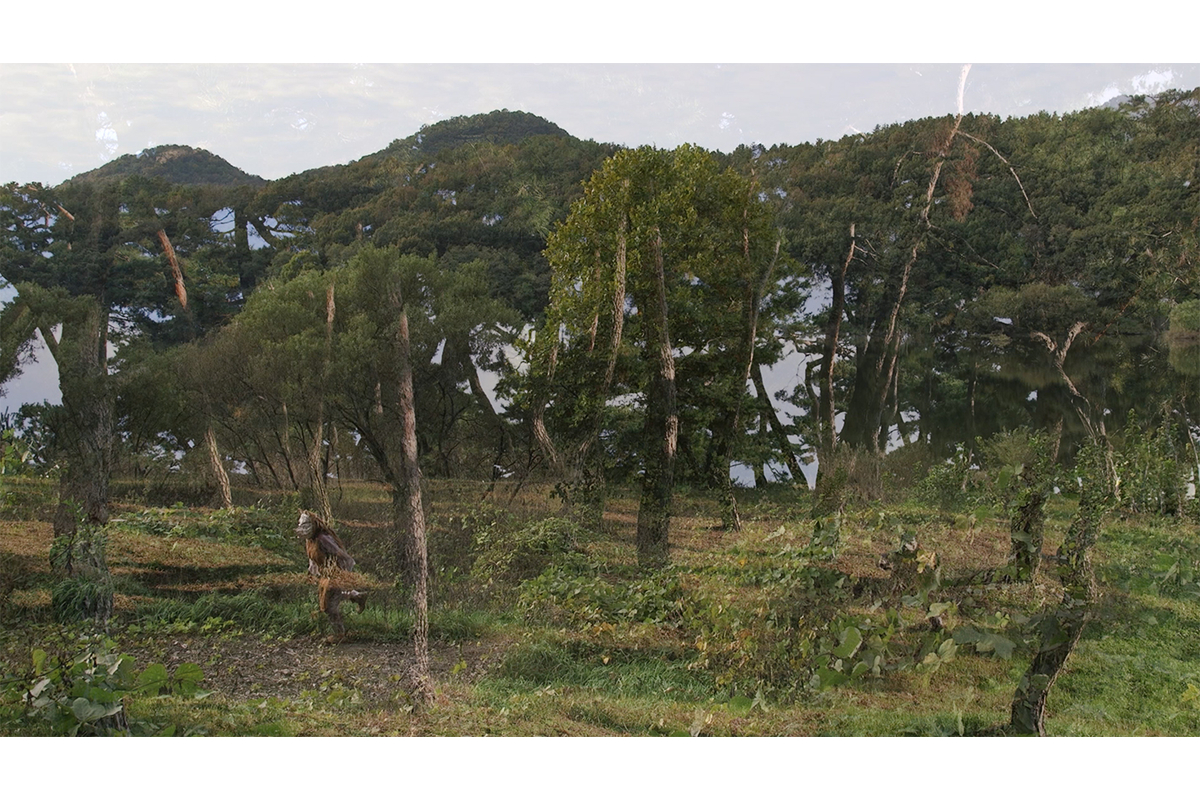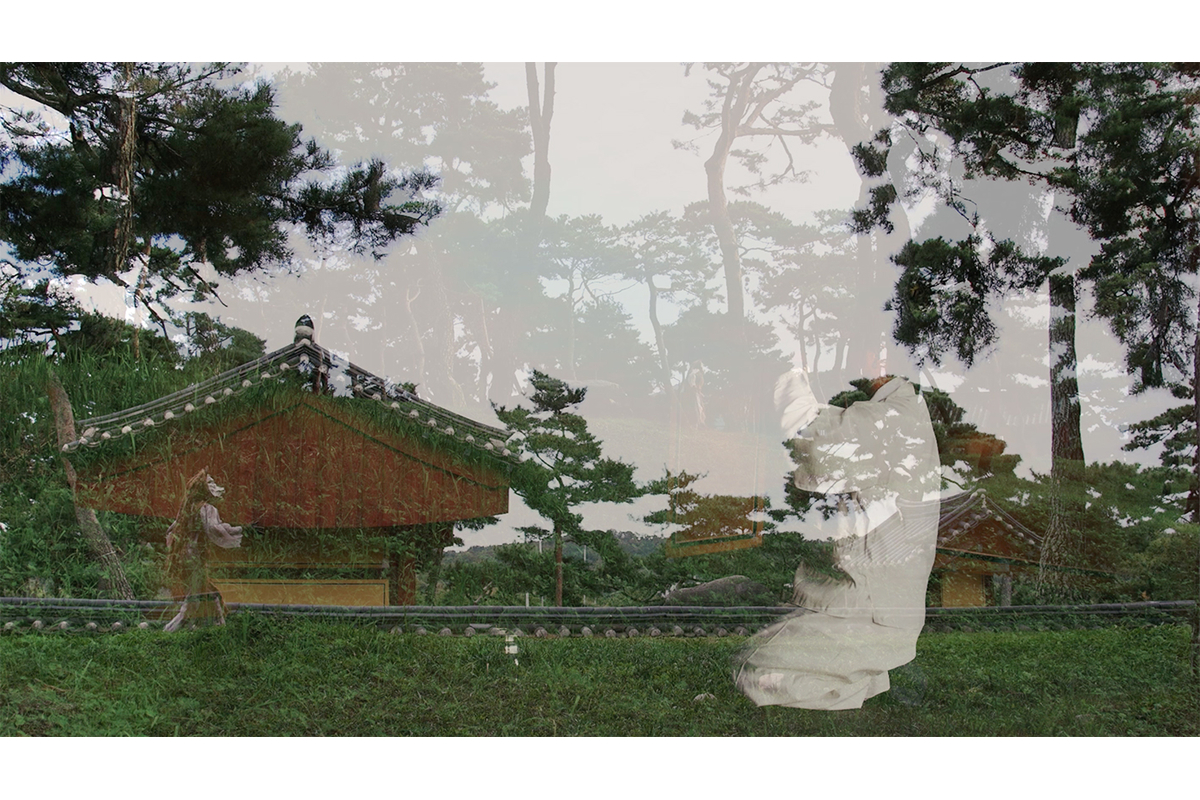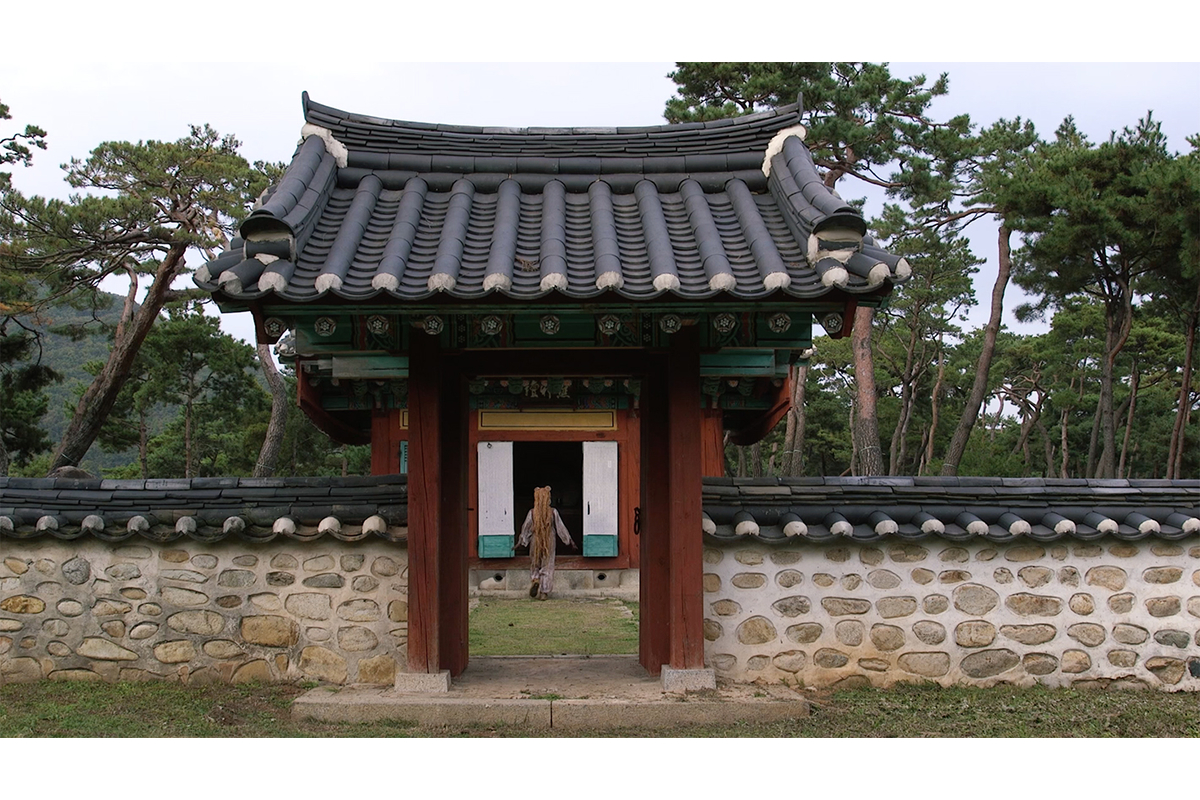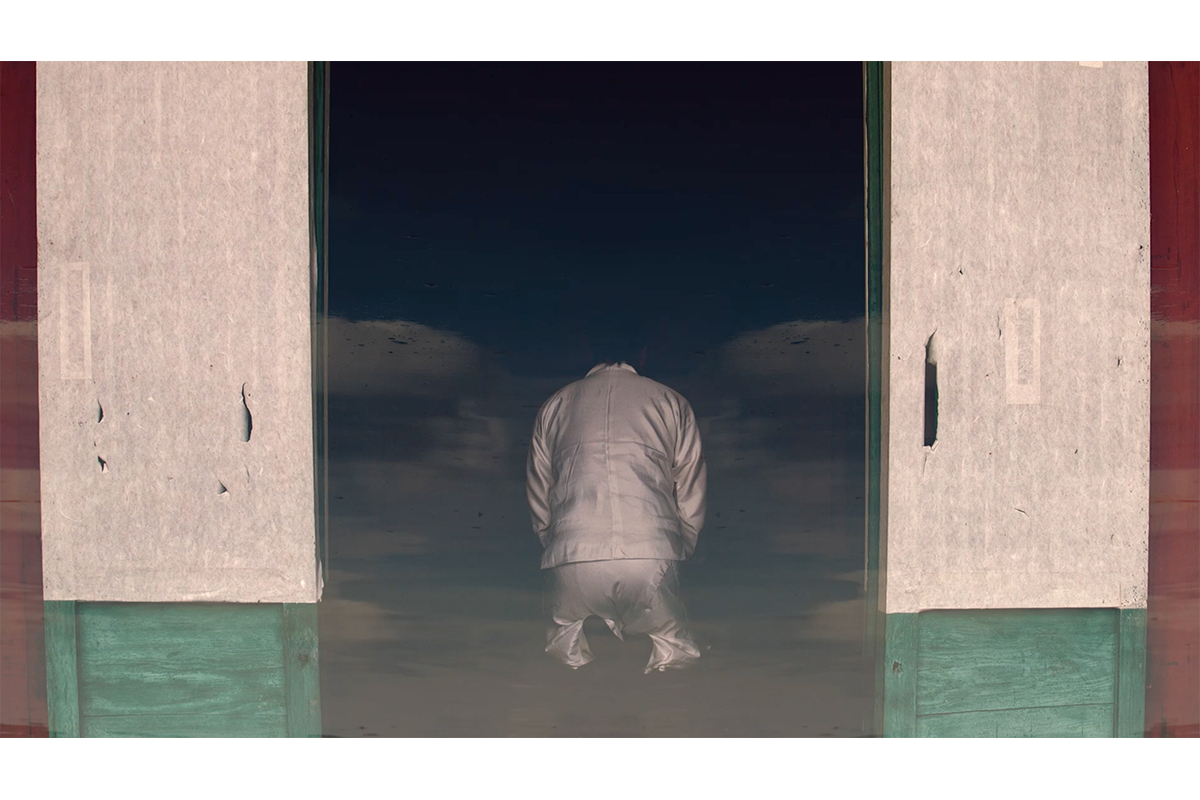Video/Film & Video-performance
"Let a Sleeping Bear Lie"
While participating in the 2016 Artist-in-Residence program at YATOO Korean Nature-Art Association in Gongju, South Korea, I created a site-based performance work, "Let a Sleeping Bear Lie," inspired by the old "she-bear" legend in the Gongju and Geumgang River region. The legend tells of a she-bear who captured a human man in her cave, his eventual escape and the bear's tragic death in the river in pursuit of her beloved. The Gongju legend was likely related to an origins myth of the Korean people that also involved a bear-human encounter. In the Dangun story, a bear and a tiger pray to Hwanung, the son of Hwanin, the "Lord of Heaven", to make them human. Hwanung gives them a task to perform. The tiger gave up before the task is complete, but the bear perseveres and is eventually rewarded by incarnating into a human female. The bear-woman, Ungnyeo, made offerings of thanks to Hwanung who decides to marry her. They have a son who became the ancestor of the Korean people. The allegory may be thought to symbolize the unified origins of the entirety of the Korean peninsula.
The project was also informed by the rich mask-making traditions as well as the Salpuri ritual funerary dances of Korea. Using silk (the meaning of Geumgang is "silk river") and other materials, I constructed a costume and mask in which to perform the bear as she processes through the Yeonmisan forest in search of her man, down toward the bank of the river and eventually arriving at the shrine built in her honor on the other side of the river. The Yeonmisan mountain, the grounds where the legendary cave is purported to be located, was adjacent to the artist-residency.
Camera: Daekyum Rho & Cherie Sampson
Performance: Cherie Sampson (with Ri Eung-woo)
Post-production: Cherie Sampson
Shot on location around Yeonmisan Mountain and Bear Shrine, Gongju.
Musical credits: Excerpts from “From Court Music to Butterfly Dance” (National Classic Music Institute Korea)
Five minute excerpt from film: https://vimeo.com/250222533?share=copy
SCREENINGS & EXHIBITIONS:
- Jeju International Experimental Art Festival, Republic of Tamnala, Jeju-do, South Korea. Screened in a video installation with other works by me. 2019.
- PSi Daegu 2018/Performance as Network: Arts, City, Culture. Daegu Art Factory, Daegu, South Korea. Screened three works during the conference, including “Let a Sleeping Bear Lie.” 2018.
- "Let a Sleeping Bear Lie," YATOO Korean Nature Arts Association Yeonmisan forest exhibition spaces. Permanent video installation throughout the year. YATOO headquarters, Gongju, South Korea. 2017.
- “In Other Tongues” Creative Summit,” Dartington Hall, Devon, UK. Screening of “Let a Sleeping Bear Lie” video in Film Programme. Organized by art.earth. An essay about the piece was also included in a text version of symposium proceedings. 2017.
- Chungnam Artist-in-Residence Archive Exhibition, Group exhibition of artist residency program works; included YATOO residency I participated in. Mosan Contemporary Art Museum, Chungcheongnamdo South Korea. 2016.
- Crossing, Exhibition for YATOO International Artist in Residence Program 2016. Group exhibition of the works made by all residents during the October residency. Gallery in Yeonmisan headquarters of YATOO, Gonju, South Korea. 2016.
